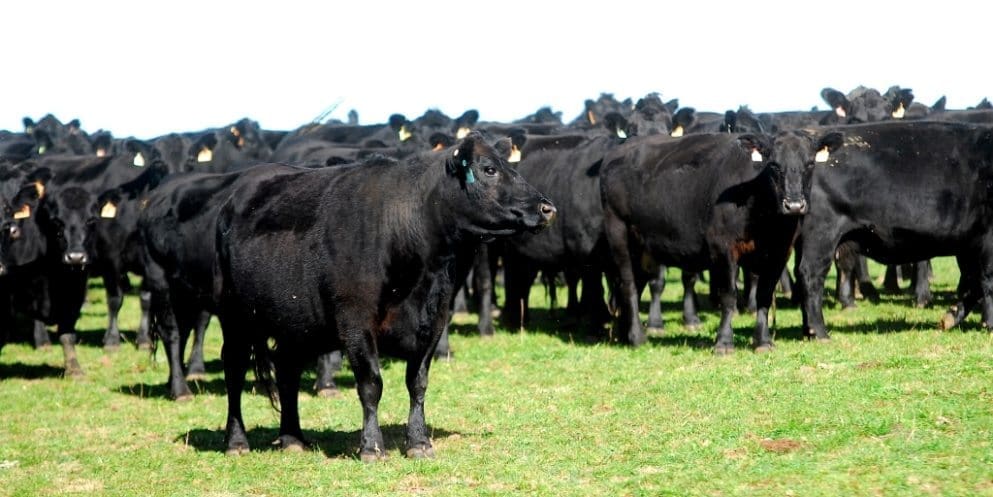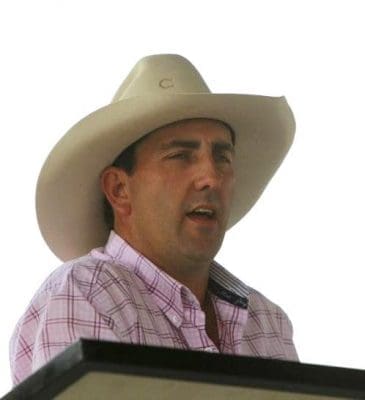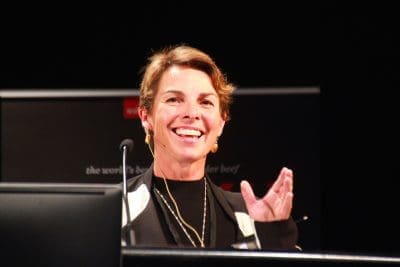
PRODUCERS who have spent time analysing their economic performance are well aware that maternal productivity is integral to a financially solid cattle business.
There have been numerous reports from farm business analysis that show the difference in profit that can be achieved through small changes in areas like conception rates, weaning rates and the length of joining and calving periods.
One of the observations from the records set throughout the 2020 bull selling season is to take a deeper look at where those bulls have come from. A strong sale isn’t driven just the fact individual bulls sold for high prices. A strong sale combines price with clearance. These two factors are the key to a record sale.
In my mind the strongest sales this year, or rather the standout sales have been a result of total clearance, and high prices paid by producers wanting access to the genetics on offer.
And while on the surface the demand for genetics may be seen as simply purchasing the right bull, the astute breeders recognise that the elite bulls they are sourcing are a reflection of well designed, focused operations with a very strong maternal herd.
So important are the cow herds, and maternal lines behind the bulls on offer, that agents often introduce the bulls in the ring on that basis. This recognition of the maternal influence is often underplayed by many, but is nonetheless a dominant factor in bull sales and purchases.
Within any breeding system, cows have to perform to retain a place within the program. Consistently going into calf and rearing a calf every 12 months is a target that is more easily written than it is to achieve. That 12-month calving target requires good management and the balance of genetics and nutrition to combine in order that calves are born and reared to weaning.

Gavin O’Brien
Cows that perform consistently and have been selected on pedigrees and genetic traits underpin profitable breeding systems.
Well known Charolais breeder Gavin O’Brien from Winchester Charolais in the NSW Central West suggested that “in some ways, bulls are almost a by-product of our system.”
“While we want to produce bulls that meet our client’s needs, having a herd of cows that perform consistently and reliably ensures we have both good bulls to sell and a profitable business model,” he said.
The challenge for many producers seeking to develop their own consistent reliable maternal herd is where to find these females. These cattle are not always available, and so producers find themselves looking and selecting internally. While this process does create the consistency within a herd, the process does take time and constant selection.
Strong female sales during 2020
Throughout this year, there have been several extremely successful female genetics sales. These include the recent Ben Nevis Mature Cow Dispersal, Kenny’s Creek Female sale and the Premier Angus Dispersal in NSW.
Clearance rates and averages across these sales were exceptional and well above expectations of vendors. Click here to access Genetics Central’s searchable list of recent stud stock sales summaries across Australia, including these female sales.
So, if maternal females are so valuable, why are seedstock operators offering their key breeding components to the market? There are several reasons, and these should be seen by producers as a good opportunity to access cattle that are unlikely to become available more generally.
According to Erica Halliday, principal of Ben Nevis Angus near Walcha, the decision to offer females was one that came about because of several key factors.

Erica Halliday presenting at the annual Wagyu conference two years ago
She said the first was to increase the recognition of the performance and capability of the Ben Nevis seedstock herd.
“We have been selling bulls by auction for only 13 years. Most of our clients have only seen our sale bulls, which as yearlings are often smaller than what people normally see at sales.
“The chance to see and invest in our cows, which have been bred to perform under the challenges of pasture production on the Northern tablelands, was an opportunity many of our clients were quick to take,” Erica said. She explained the ability to see how well the Ben Nevis cows had recovered from three years of drought, as well as having well-known and highly regarded pedigrees was a great drawcard for producers.
“They were investing in us, and in the consistency of our herd,” she said.
Erica also outlined the importance of being open and transparent in approaching a female sale. “We offered entire year groups, including our donor females. We didn’t want anyone to think we were holding anything back, and wanted to offer clients the chance to select from the entire group.”
Many producers have wondered why any seedstock operator would offer their proven females, even to increase recognition of the herd producing highly sought-after bulls.
Erica explained that the decision offered new opportunities. “It lets us make room within our program to bring on younger females and increase our genetic gain across the herd. We also had the chance to ensure that the genetics we had preserved through drought and selected on for years weren’t lost to the industry by selling as cull cows.”
For Gavin O’Brien in the NSW central west, the opportunity to offer heifers for sale is one that he has been exploring with several other breeders.
“We think our clients need to see what a great maternal female is. Most producers need several years of recording and selecting to develop those cows in their own herd. The ones that consistently go into calf early, that rear the heavier weaners; the ones that can be relied on to drive a business.”
The Combined Registered Breeders Sale coming up on Auctions Plus on 7 November is part of the industry’s approach to increasing the availability of females in order to speed up the rate of maternal improvement across herds.
Looking ahead to 2021, it is likely special female sales will become a greater part of the sale calendar.
These sales will focus on the elite maternal females that can make improvements in other herds and will come with proven performance.
Breeders who are looking at this year’s model should make sure they look beyond the clearances and averages achieved at registered female sales.
Online contribution
Key lessons from 2020 include the decision to offer whole year groups and to provide data such as pedigrees on animals so producers can select with confidence the females that suit their herds.
The value of online sales has been a highlight in bull sales this year. Erica Halliday described online as equally important for this year’s Ben Nevis female sale.
“More than one third of the cattle in our sale were purchased sight unseen via online bidding on the basis of the videos, photos, EBVs and objective data we gathered,” she said.
“It has been a breakthrough in the way that cattle are sold, and people tell us it makes selection easier as animals can be compared side by side and producers don’t have to rely on their memory.”
While the one intention of the female sale for Ben Nevis was to raise producer awareness of the maternal females, Erica highlighted that a well-structured marketing plan is also a key lesson for producers in order to attract and raise brand awareness.
 Alastair Rayner is the Principal of RaynerAg, an agricultural advisory service based in NSW. He regularly attends bull sales to support client purchases and undertakes pre-sale selections and classifications. He can be contacted here or through his website www.raynerag.com.au
Alastair Rayner is the Principal of RaynerAg, an agricultural advisory service based in NSW. He regularly attends bull sales to support client purchases and undertakes pre-sale selections and classifications. He can be contacted here or through his website www.raynerag.com.au
